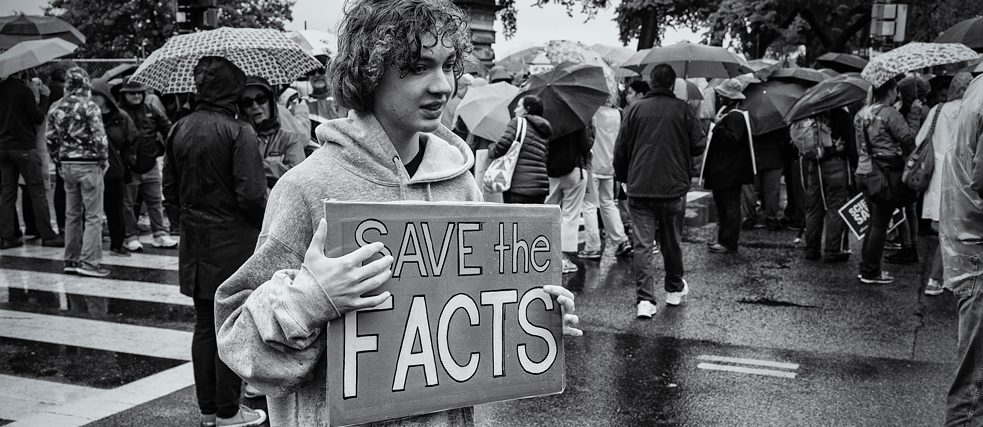Fake News
Litmus Test for the Political Public

Some say, “Fake news is toxic for democracy!” Others say, “Fake news is a symptom, but not the real problem.” Now wait just a moment: What is fake news anyway? And why is it causing so much fuss?
By Jonas Kaiser
It is difficult to find a uniform definition of fake news. Is an unintended error in an article fake news? Or a forecast that turns out to be wrong? Not at all. According to Ethan Zuckerman of the Massachusetts Institute of Technology (MIT), we can differentiate between three forms of fake news: news that devotes excessive attention to a particular topic, propaganda and targeted disinformation.
The former ultimately makes the incorrect impression that a topic is more relevant than it should be. For example, as an unpublished Harvard University study shows, US media reports about Hillary Clinton’s alleged email scandal were disproportionately frequent. Zuckerman explains this excessive attention as a “false balance;” an attempt by the US media to report the scandals of Trump and Clinton in a balanced way so as not to appear partial. Not the topic itself, but its supposed relevance is fake.
Propaganda, on the other hand, is a traditional element of politics and election campaigns. It describes the mixing of true and false information to weaken the other side and strengthen one’s own. The tactic of disinformation is comparatively new. Its aim is not to make citizens believe in a falsity, but rather thinning out the difference between true and false, between serious and dubious sources. This deliberate distortion of the public debate, which can be observed in the United States for example, is also feared for this year’s Bundestag election in Germany.
What’s the problem?
The disinformation type of “fake news” often consists of stories that are deliberately fabricated and disguised as news. The spreading of fake news is not always done for political, but sometimes simply for financial reasons. Money can be made with fake news. These reports are usually published on websites that have names and appearances similar to that of reputable mass media. This form of imitation often makes it difficult to identify fake news sites.
However, the reports only become problematic through internet platforms such as Facebook, Twitter or Reddit, on which they can be shared and made available to a broader public. This is because sharing such content has a double effect: not only does the fake news site suggest its own authenticity, but the users who share the post also appear to ensure that the posts are genuine. For example, it naturally makes a difference whether fake news posts are being shared on Twitter by an unknown account or the President of the United States.
The influence of fake news
When, shortly after the US election in November 2016, Buzzfeed presented a study that said that viral fake news posts were shared more frequently on Facebook than the top posts in traditional mass media, it received a lot of attention. Some commentators were convinced that fake news might have contributed to Donald Trump’s election.
Initial scholarly studies, however, paint a different picture. A joint study by Harvard University and MIT, which examined over 1.2 million articles from over 25,000 Internet sites, shows that fake news sites only played a secondary role in the online discourse on the US election. Another study even suggests that fake news articles would have to be as convincing as 36 election ads in order to have influenced the US election. The tone of a Harvard Law School conference on the topic is also rather comforting: As problematic as fake news may be in many ways, historically it is neither new nor was it decisive for the election.
So, what do we do?
All of this is not to say that fake news may not pose a problem for our democracy and public discourse. It just means that the situation is not as bad as some politicians fear when they call for a ban on fake news.
One possible solution is now coming from tech companies: Facebook, for example, is trying to get users to report fake news themselves and then have the articles checked for correctness by a third-party journalistic site. In the case of Twitter, researchers have proven that rumours spread differently than real news. And Google has banned several fake news pages from its own AdSense advertising network and thus hit the site operators’ most vulnerable spot: their wallets.
This certainly doesn’t solve the problem of fake news. After all, propaganda and rumours have been around for a long time. But with strong mass media and consensus-oriented political discourse, fake news should have little chance of survival.